Calculus
Chapters
Integrals
Integrals
There are many different uses for integrals. These include finding volumes of solids of revolution, centres of mass, and the distance that Gus the snail has travelled during his attempts on the land-speed record. Definite integrals also have many applications in Physics. One common use of integrals is to find the area under the graph of a function.
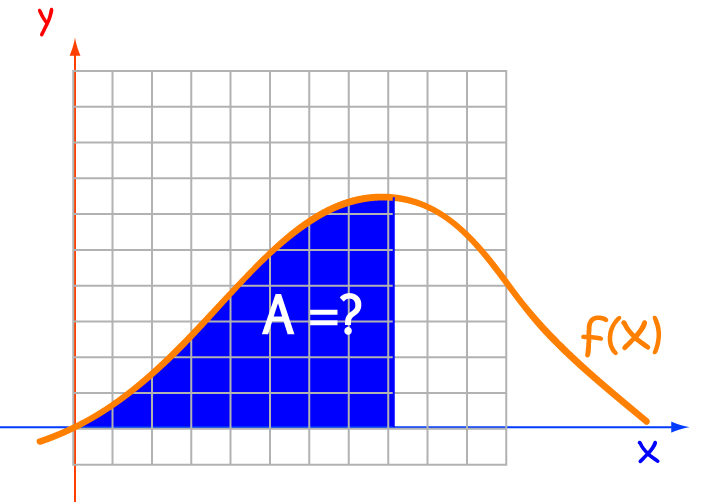
An integral is a giant sum. To find the area under the graph of a function, we add up the areas of little rectangles whose base length approaches zero, as shown in the diagram. Fortunately, we don't often have to calculate these sums. There are rules of integration that can help us out.
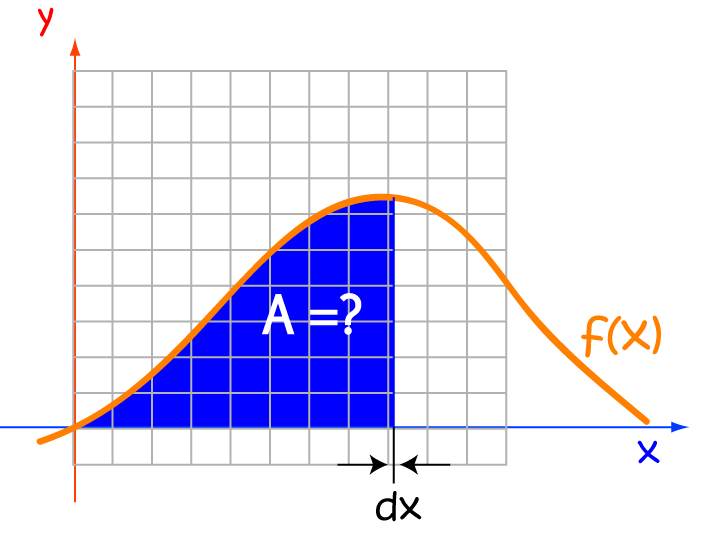
Anatomy of an Integral
The symbol for an integral looks a bit like an elongated "S". Think of this as "S" for sum. The other parts of the integral are shown in the diagram
below:
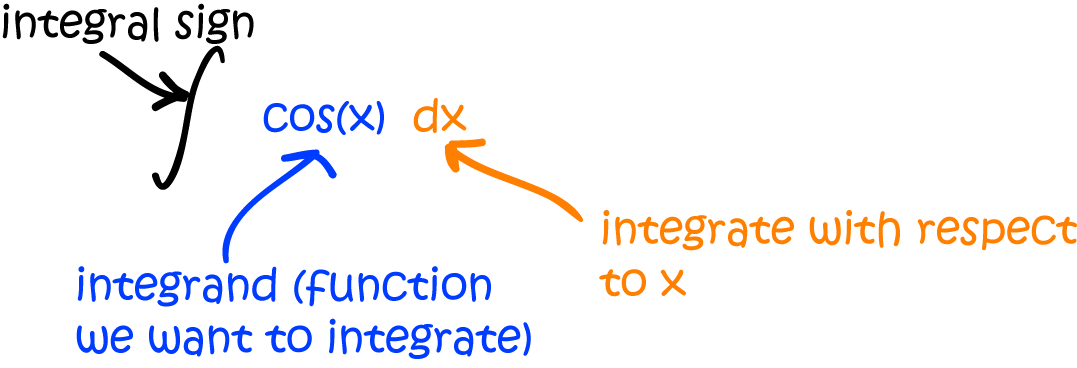
Note that the integrand (the function we're integrating) is placed immediately after the integral sign, and the whole thing is finished off with a \(d\text{(variable of integration)}\) to indicate that we're integrating with respect to this variable. Of course, this variable needn't be an \(x\): it could be anything you like. For example, Gus the snail might think of writing:
Definite Integrals
As opposed to indefinite integrals, definite integrals have beginning and end values that decorate the integral sign. The bottom value indicates the beginning of the interval, and the value up the top indicates the end value.
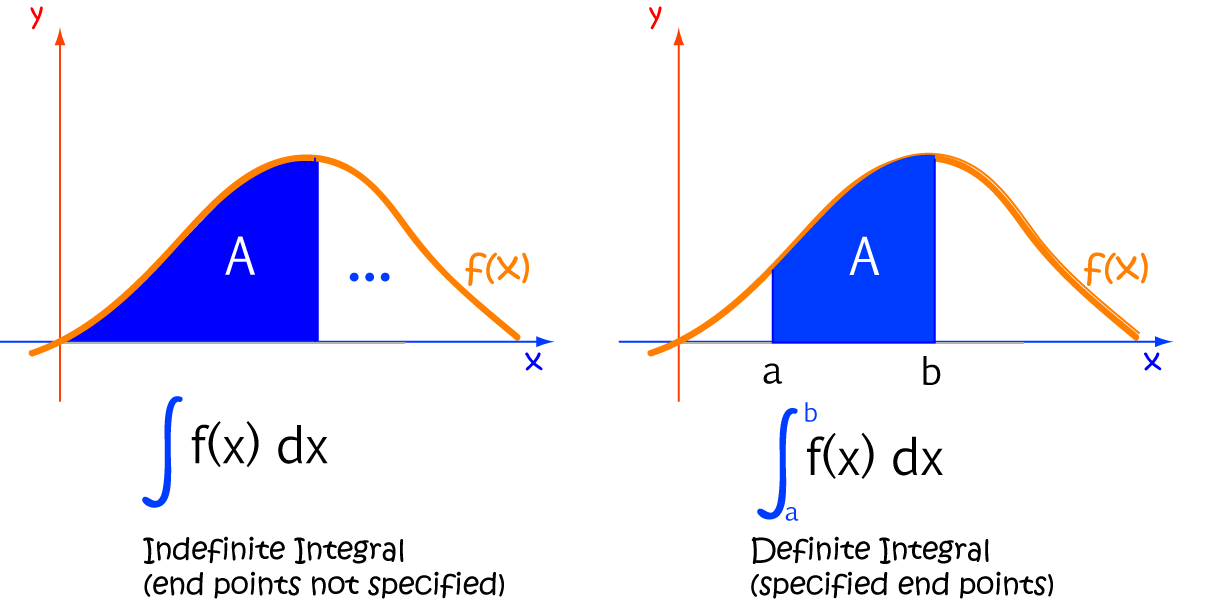
If we can find a function \(F(x)\) (sometimes called a Primitive Function) such that the indefinite integral
\(\displaystyle{\int f(x)\;dx = F(x)}\), then the indefinite integral over the interval \((a,b)\) is calculated by evaluating:
Let's see this in action on some examples.
Example
The indefinite integral is given by \(\displaystyle{\int (6 - 2x)\; dx = 6x - x^2 + C}\). Find its values at the end points:
- At \(x = 1\): \(\displaystyle{\int (6 - 2x)\; dx = 6(1) - (1)^2 + C = 5 + C}\).
- At \(x = 2\): \(\displaystyle{\int (6 - 2x)\; dx = 6(2) - (2)^2 + C = 8 + C}\).
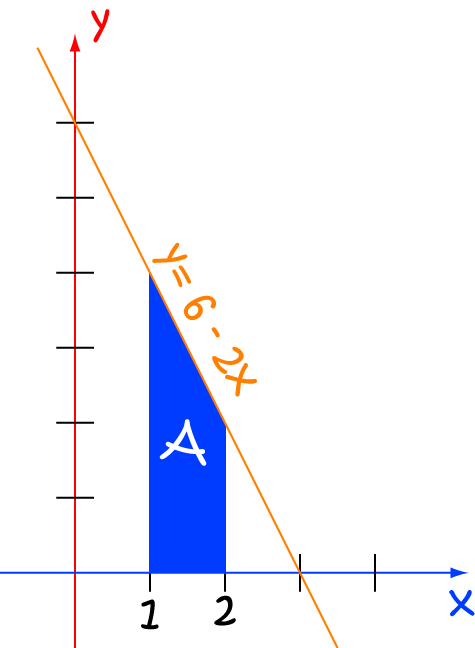
Remember that the integral should give us the area under the curve? We can use the geometry of this simple example to check that our calculations are correct. The region is a trapezium, so its area is equal to
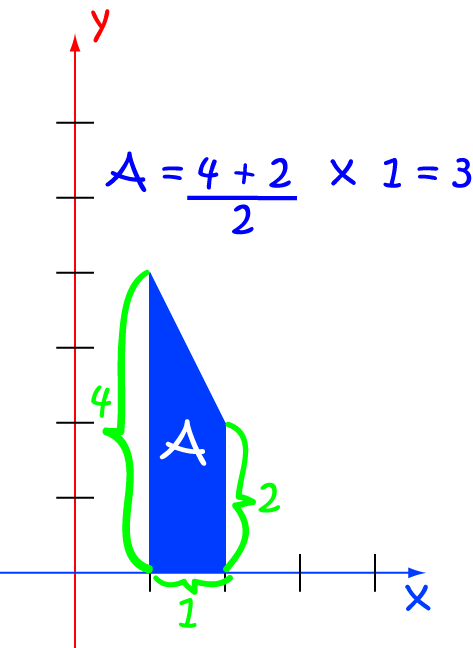
Example
The indefinite integral is given by \(\displaystyle{\int \sin (x) \; dx = - \cos (x) + C}\). As we saw above, we can ignore the \(C\) when we evaluate the definite integral, so:
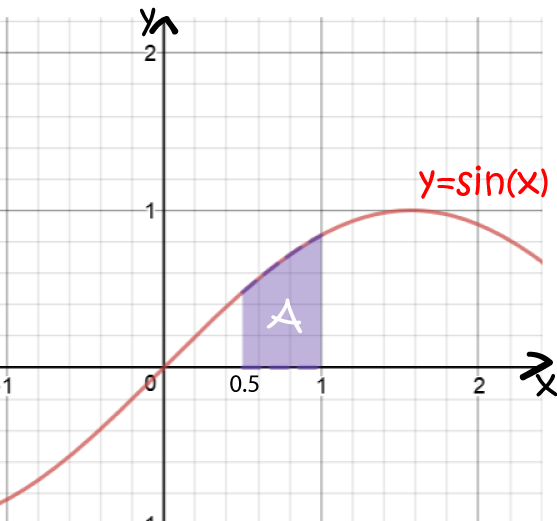
Example
Don't forget to switch your calculator to radians!
The indefinite integral is given by \(\displaystyle{\int (x^2 + \sin(x) )\; dx = \dfrac{x^3}{3} - \cos(x) + C}\). As we saw above, we can ignore the \(C\) when we evaluate the definite integral, so:
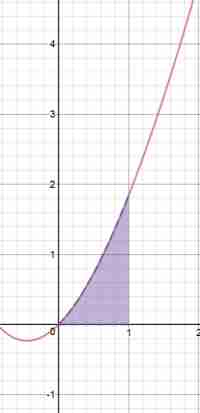
Example
The indefinite integral is given by \(\displaystyle{\int (x^2 -2 )\; dx = \dfrac{x^3}{3} - 2x + C}\). As we saw above, we can ignore the \(C\) when we evaluate the definite integral, so:
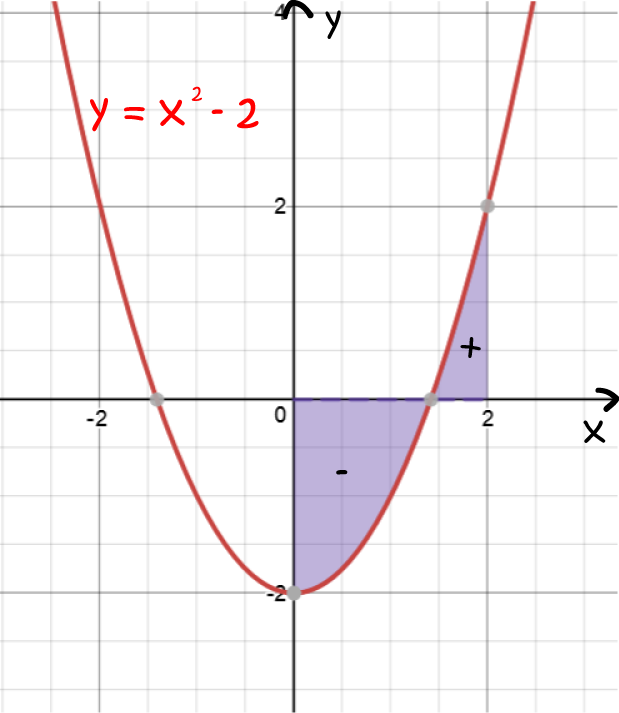
In the next example, we're asked for an area. We need to work out where the graph crosses the \(x\)-axis so that we can split the integral up and take the absolute values of the integrals of the bits below the \(x\)-axis.
Example
This example involves the same function as the preceding one, but this time we're asked for an area, so we need to split the integral up into two sections, and take the absolute value of the integral corresponding to the section under the \(x\)-axis. First, we need to work out where the graph crosses the \(x\)-axis:
From \(x = 0\) to \(x = \sqrt{2}\):
From \(x = \sqrt{2}\) to \(x = 2\):

Function Requirements
Continuity
In order to evaluate a definite integral, we need the integrand (the function we are integrating) to be continuous on the interval \((a,b)\). That means it can't contain any jumps, holes or vertical asymptotes. In case you've forgotten, vertical asymptotes occur at \(x\)-values where the function is undefined. As the function approaches these \(x\)-values, the function values approach plus or minus infinity. There are ways around the jumps and holes: we can simply split the function up into parts where it is continuous and add up the definite integrals of the parts. However, vertical asymptotes cause all sorts of problems.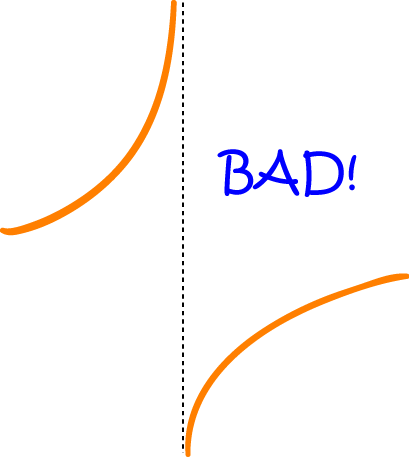
Properties of Definite Integrals
The following properties can help you to split up integrals into chunks that are easy to calculate.
Reversing the Limits
If we reverse the order of the limits, the resulting integral is minus the value of the integral with the limits in the original order: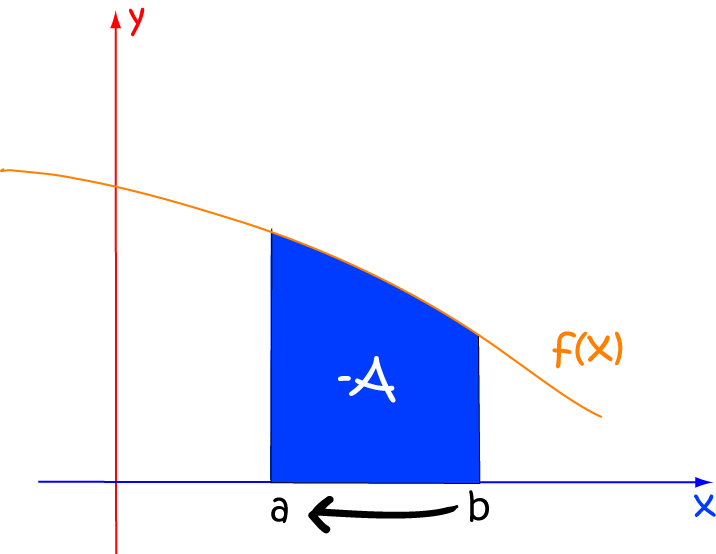
Both Limits Equal
If both limits are equal, the integral is zero: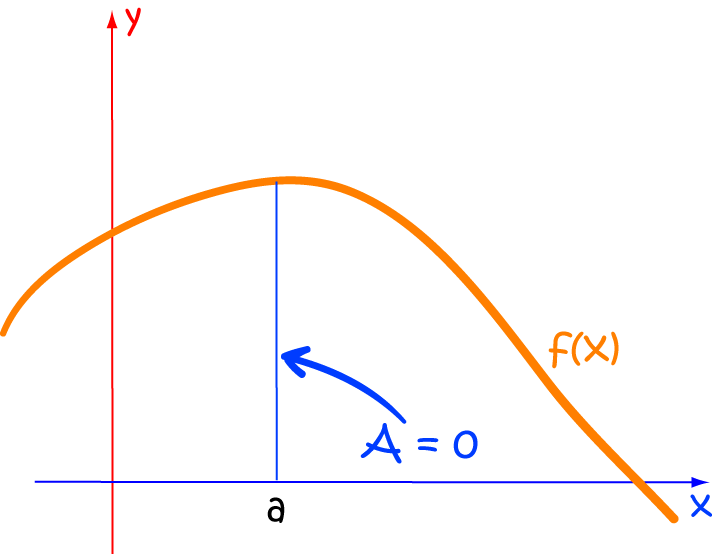
Combining Two Intervals
If two intervals are adjacent, the integral over the combined interval is equal to the sum of the integrals over the two intervals: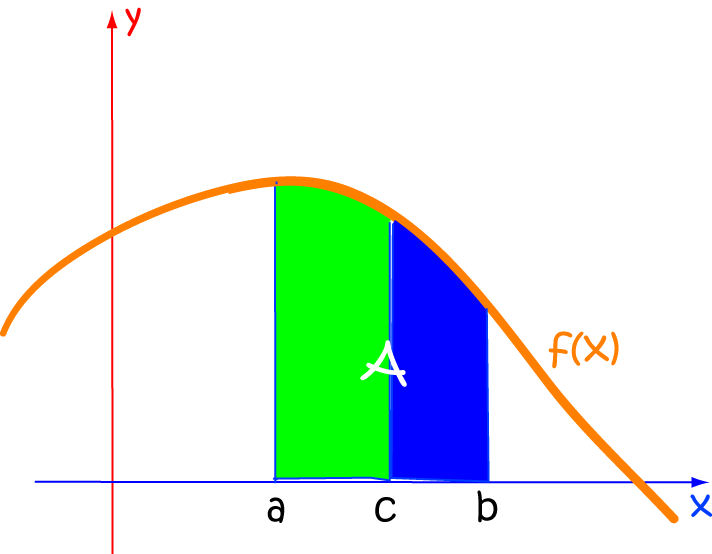
Conclusion
To find a definite integral of \(f(x)\) over the interval \((a,b)\), first find the indefinite integral \(F(x) = \displaystyle{\int f(x)\;dx}\) and evaluate \(F(x)\) at \(a\) and at \(b\). We then have
Description
Calculus is the branch of mathematics that deals with the finding and properties of derivatives and integrals of functions, by methods originally based on the summation of infinitesimal differences. The two main types are differential calculus and integral calculus.
Environment
It is considered a good practice to take notes and revise what you learnt and practice it.
Audience
Grade 9+ Students
Learning Objectives
Familiarize yourself with Calculus topics such as Limits, Functions, Differentiability etc
Author: Subject Coach
Added on: 23rd Nov 2017
You must be logged in as Student to ask a Question.
None just yet!